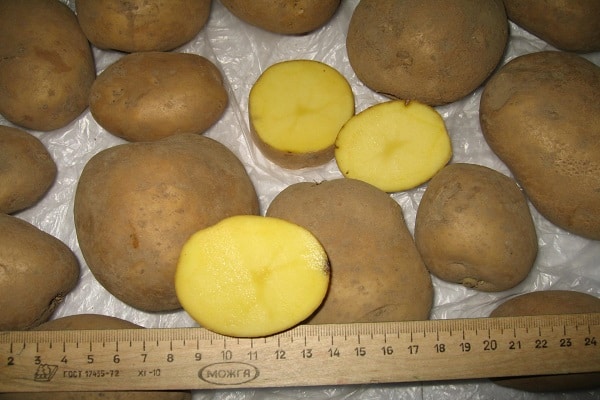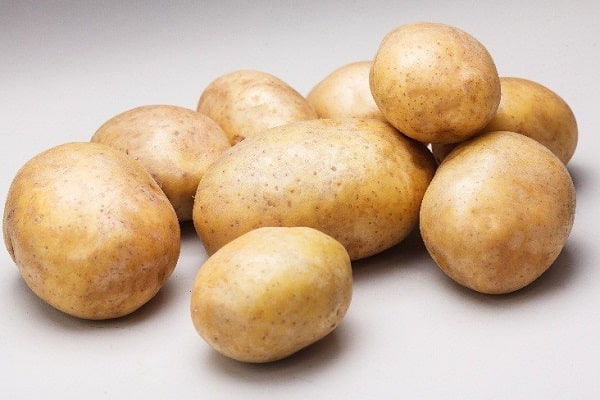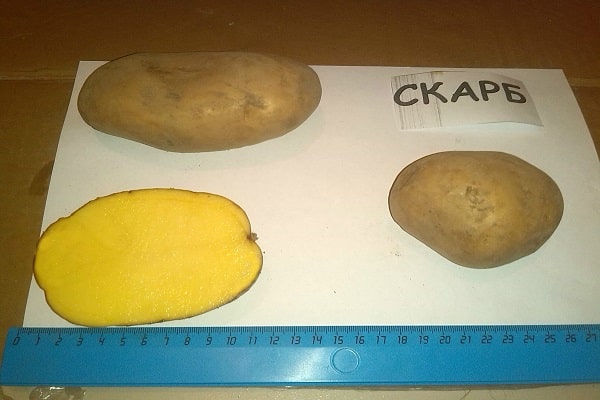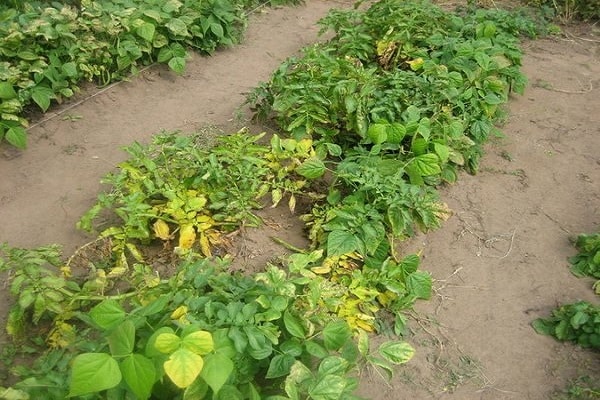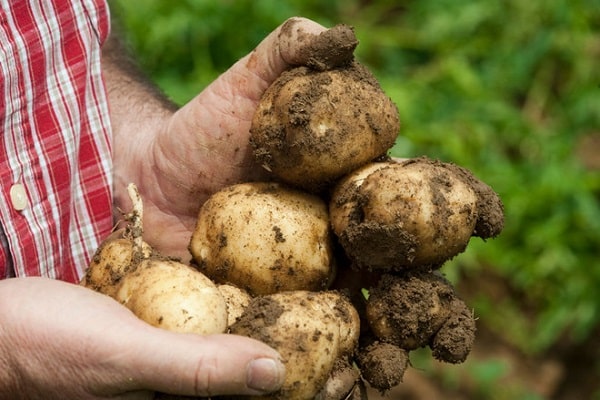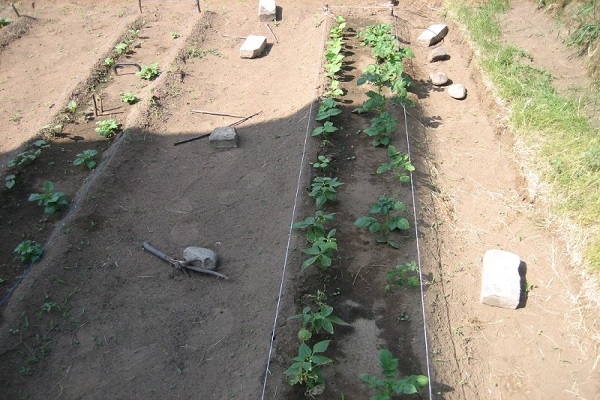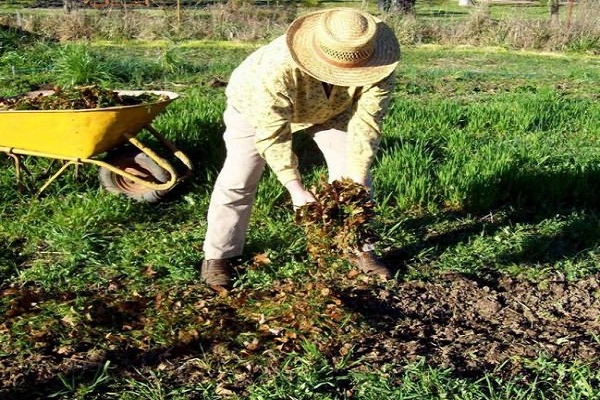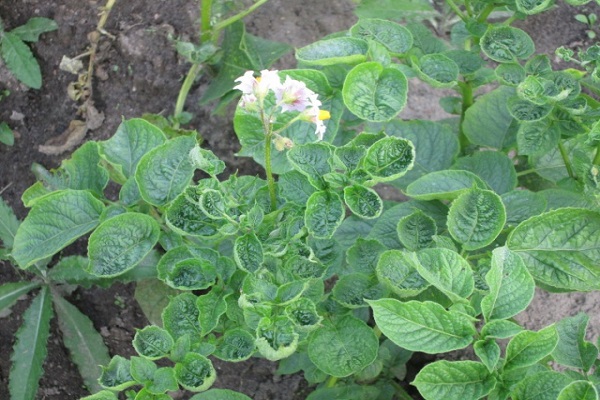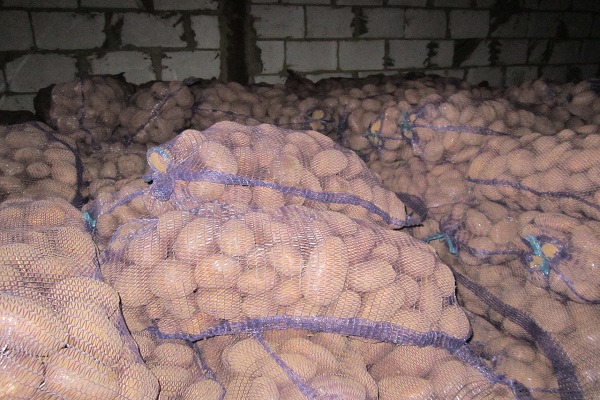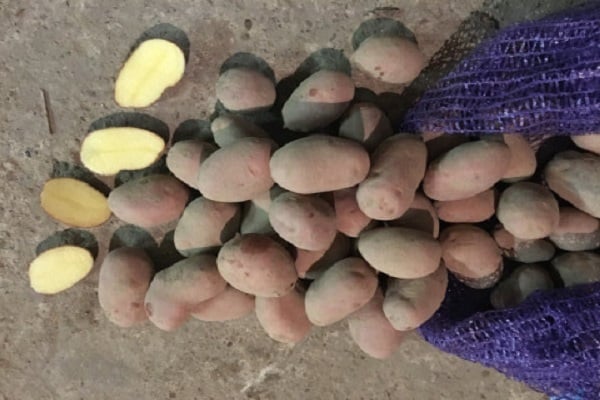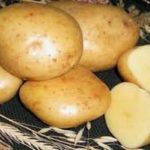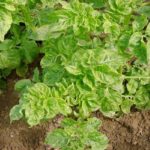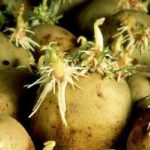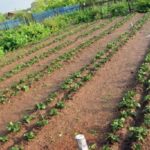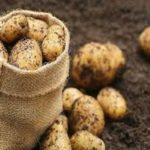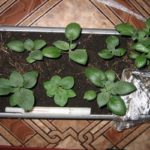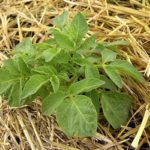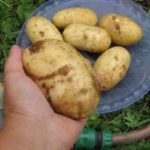Scarb potatoes are considered one of the popular varieties that are grown today in the garden plots of many Russian gardeners. The advantage of garden crops is the ability to obtain stable yields when grown even in difficult climatic conditions. To get the full benefit from the variety, you must follow the basic growing rules, which you should learn about before the start of the gardening season.
Description of the variety
The name of the garden crop is translated from Ukrainian and literally means “belongings” or “wealth”.The species was first bred in 2002, and it was the result of the work of Belarusian breeders.
The variety belongs to a variety of mid-season crops. The average ripening period is from 80 to 90 days from the moment the first shoots appear. The bushes are not large in size, have dark green leaf plates and form white inflorescences at the time of flowering.
The fruits have an oval shape and a smooth, golden-colored skin. When cut, it has yellow flesh. The description indicates the starch content in tubers ranging from 12 to 17%. Potatoes acquire the property of being crumbly only after prolonged cooking, and due to their yellow color they are ideal for making mashed potatoes and chips.
With proper cultivation techniques, an average of 10 to 14 tubers are harvested from one bush. The average weight of one vegetable is from 150 to 250 grams. Reviews from gardeners confirm that from one hundred square meters of personal plot you can get up to 50 kilograms of potatoes with sufficient soil fertility.
Growing
The Scarb potato variety prefers sandy and sandy loam soils. It does not tolerate stagnant water, so it is not suitable for growing in low-lying areas and clay soils. It is preferable to choose sunny places for planting, which are protected from the north and east by plantings in the form of bushes and trees.
The planting site must be prepared in the autumn. The variety shows higher yields in oxygen-enriched soil with good oxygen throughput. To ensure this quality, the soil is dug up onto the bayonet of a shovel. The soil is enriched with manure, humus, and wood ash.
A special feature of the variety is that the preparation of seeds for planting begins earlier than other potato varieties.The minimum period is considered to be 3 weeks, that is, during this period before planting, planting material must be removed from the storage location. It is not recommended to cut tubers for planting, since this method of cultivation significantly slows down the growth of sprouts. Features of preparing planting material:
- reject seeds with defects;
- treat with special preparations for disease prevention and growth stimulation with copper sulfate in the proportion of 1 tsp. products for 10 liters of water or other product with a similar effect;
- Scatter the potatoes in a layer of no more than 2 tubers.
The room for preparing seeds for planting should be bright with a temperature from +18 to +25 0C. Every 7 days, spray with warm water to prevent seed sagging. Planting work begins when the soil temperature reaches +15 0C. Tubers are planted in accordance with the following scheme:
- planting depth - from 6 to 8 cm;
- the distance between each hole is from 22 to 25 cm;
- The width between rows is from 60 to 80 cm.
If there is a threat of frost and sprouts appear, then the rows are hilled up and the shoots are completely covered with earth. Such measures prevent the potatoes from freezing and promote the formation of additional roots.
Features of care
Skarb is considered a drought-resistant variety, so the soil does not need to be moistened if there is sufficient natural rainfall. In the first stages, care consists of removing weeds and hilling. The first loosening of the soil is carried out when the potatoes reach a height of 10 to 15 cm, completely covering the tops. The second hilling is done when the bushes grow another 10 cm.
In hot weather conditions, hilling work is carried out in the morning, after the soil has cooled properly.When the shoots are covered with hot soil, severe injury to the tops occurs and the yield of the variety decreases.
Additional watering is carried out during the flowering period of potatoes. Each bush should have 3 to 4 liters of water. Moistening must be carried out 14 days before harvest, while the norm for each plant is from 3 to 4 liters.
Advantages and disadvantages
The variety has a whole range of advantages, and high yield is not the main one among them. Characteristics of the advantages of the variety:
- crop stability;
- good taste;
- ability for long-term storage;
- unpretentiousness to growing conditions;
- resistance to putrefactive damage.
Proper yield indicators can be obtained only if the seeds are pre-prepared before planting. To do this, 3 or 4 weeks before the planned planting, the tubers are taken out of the cellar and placed in a warmer room. Among the disadvantages, some gardeners list the unfriendly appearance of shoots after planting and uneven flowering of the tops.
Pests and diseases
The potato variety has good resistance to blackleg disease, wet rot, and nematode. The variety is most susceptible to the following diseases:
- late blight;
- scab;
- twisting of sheet plates.
To reduce the risk of such diseases, crop rotation must be observed, that is, the variety cannot be grown in the same place for several years. After harvesting, careful selection of seeds is required to remove defective tubers.
If the problem of late blight was previously identified at the planting site, then when the tops reach a height of 10 to 15 cm, spray with copper sulfate at the rate of 1 tbsp. l. for 10 liters of water.A good prevention of the disease is to treat the plantings with fungicides - Agiba-Pik, Ridomil.
To prevent the appearance of pests in the form of aphids, it is not recommended to place plantings next to plums and viburnum. To attract natural enemies of many harmful insects, you can plant dill, chamomile, and coriander among potato rows. Ladybugs are considered the most dangerous for potato enemies.
Harvest and storage
Harvesting can begin 80-90 days after the first shoots appear. An indicator of the possibility of harvesting potatoes is the yellowing of the leaves and the lack of ability of the tuber skin to peel off. This quality can be easily checked by pressing the platinum of a nail onto the surface of the tuber.
After harvesting, a sanitary period is required to identify diseased and defective root crops. After digging, the tubers are kept in an open, ventilated place for 2 hours, then removed under a canopy for 7 days. Only healthy ones are selected for storage. potato tubers without damage, defects, or chips from a shovel. The harvest is placed in a cool room.
It is recommended to immediately carry out work on sorting the tubers. You should not select large-sized potatoes for planting material. It is necessary to periodically check the tubers and remove fruits with signs of rotting.
Reviews from gardeners
Anatoly, 47 years old:
“A good high-yielding variety, but slightly inferior to Dutch varieties. Potatoes do not require special care, the planting procedure is standard, care consists of timely hilling and feeding. There are no complaints about the quality and appearance of the tubers.”
Alexandra, 32 years old:
“An excellent variety in terms of excellent potato taste.The puree from it turns out soft and acquires a pleasant yellow tint. When frying, the potatoes do not become overcooked and have a beautiful golden crust. One of the few varieties that is able to retain its qualities until a new harvest. At the same time, the skin remains as smooth and does not become flabby, like many other potato varieties.”
Marina, 43 years old:
“One of my favorite varieties, it is very easy to clean due to its smooth, smooth surface. The eyes are small enough and do not interfere with peeling. The variety performs well in terms of yield. Even in the hot summer, on average, up to 10 good tubers were removed from one bush.”


